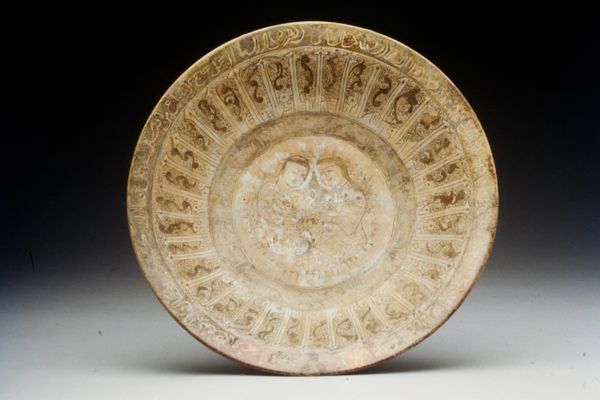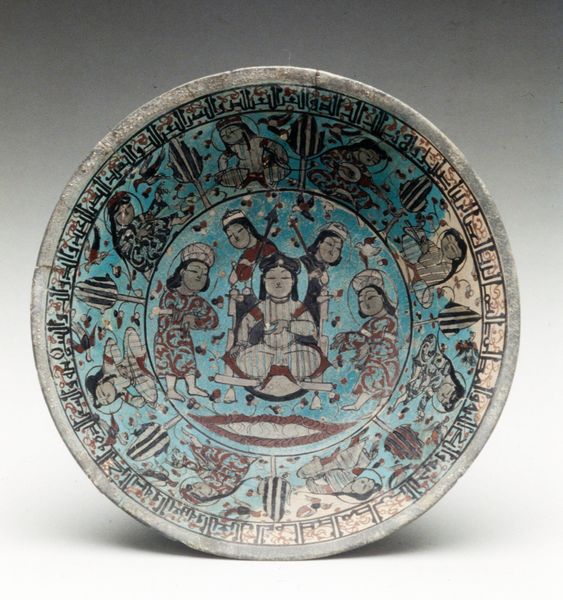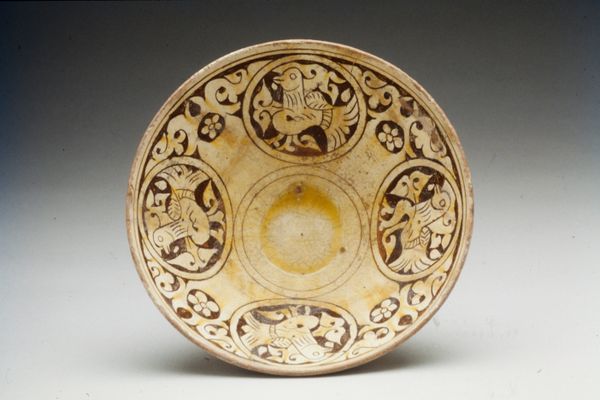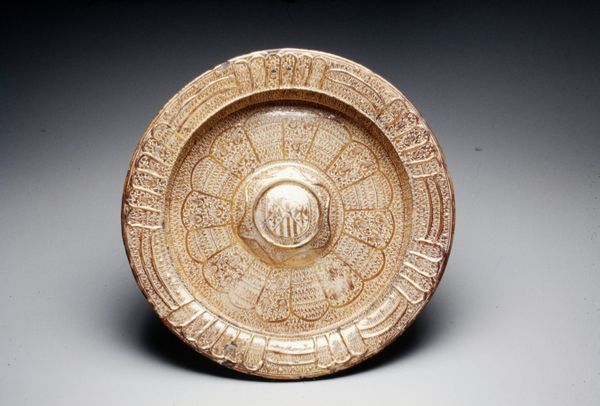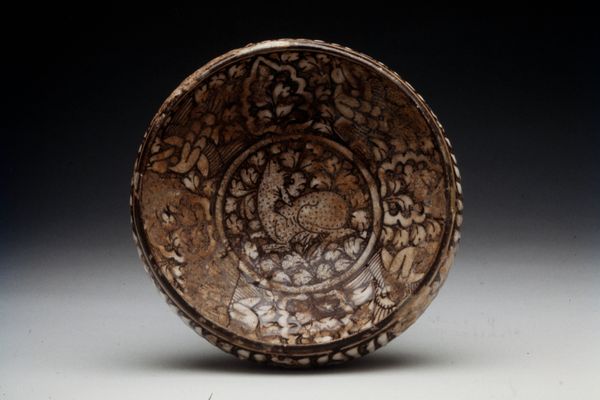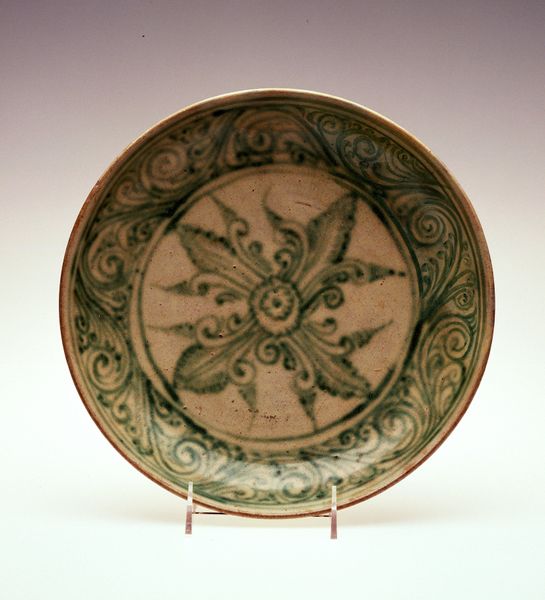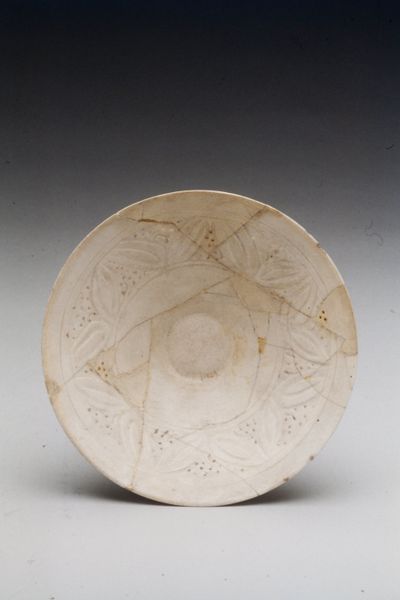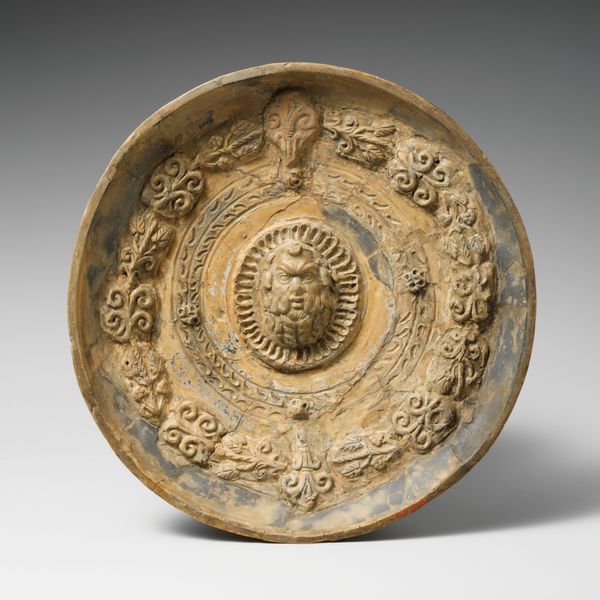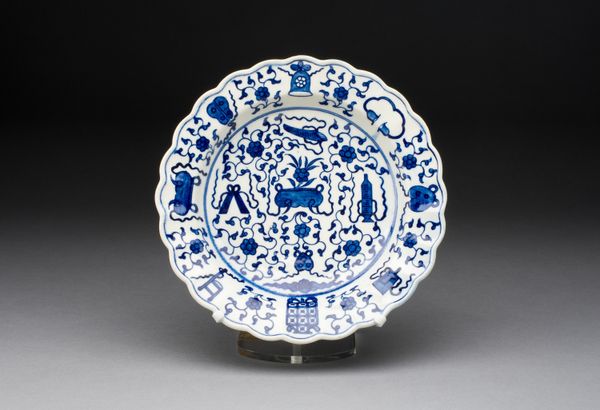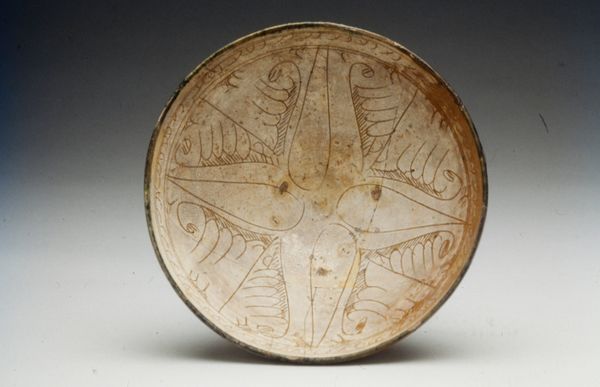
ceramic
#
medieval
#
ceramic
#
figuration
#
ceramic
#
islamic-art
Dimensions: 3 3/4 x 8 13/16 in. (9.53 x 22.38 cm)
Copyright: Public Domain
Editor: So, this ceramic bowl, dating back to before 1220, features these repeating animal motifs. I see a dog chasing a hare. There's a whimsical, almost dreamlike quality to the design, yet it seems quite formal. What stands out to you? Curator: It’s fascinating how these animals, seemingly engaged in a hunt, evoke so many layers of cultural meaning. The hare, often a symbol of fertility and vulnerability, is juxtaposed with the dog, representing loyalty and the hunt. Do you notice how the continuous circular pattern creates a sense of cyclical time, reflecting perhaps the seasons or even the cosmic order? Editor: I do see that now. It feels both decorative and symbolic at the same time, the placement of those animals along the border. Does the swirling background have a similar significance? Curator: The background swirls might be an echo of natural patterns, the chaotic but ever-present forces of nature influencing human and animal existence. In many cultures, such swirls are associated with energy and the dynamic interplay of life and death. It creates a psychological space that pulls us in. Consider, too, the craftsman’s choice to encircle the figures within a tight ring, giving it almost a life-cycle kind of vibe. Editor: I hadn't thought of it that way. So, it is more than just a charming decorative object? Curator: Absolutely. It's a visual meditation on the interconnectedness of all things, life, death, loyalty, nature...all wrapped in a circle, repeated, remembered, like visual echoes from a collective past. Editor: I’m going to have to rethink how I look at "decorative" art from now on. Thank you! Curator: Indeed. Perhaps this bowl prompts us to question how everyday objects might carry profound symbolic weight.
Comments
No comments
Be the first to comment and join the conversation on the ultimate creative platform.

